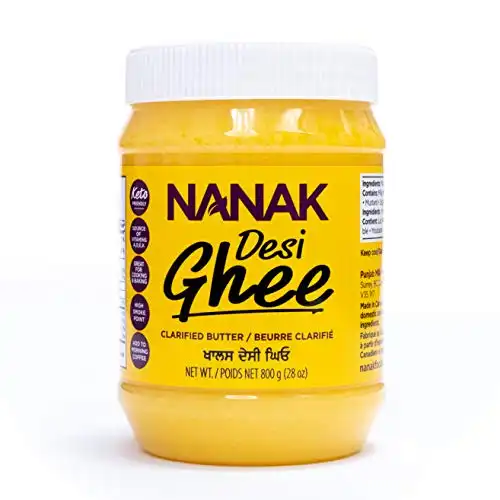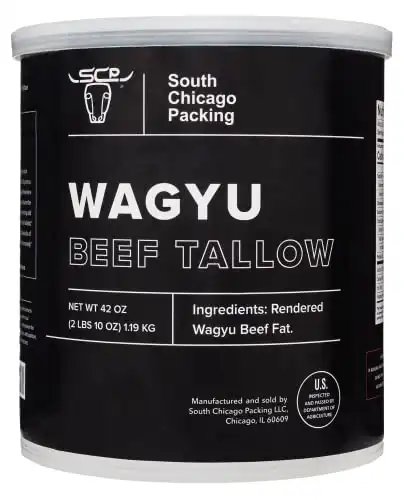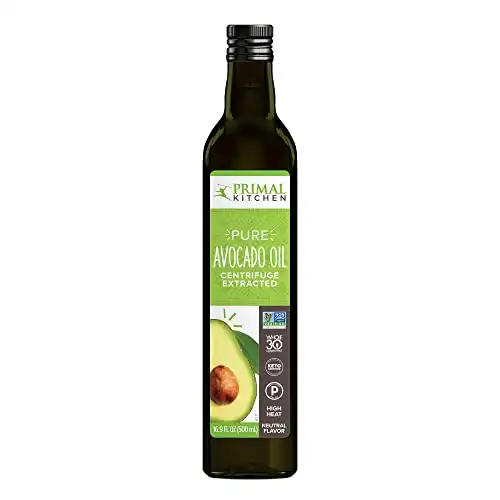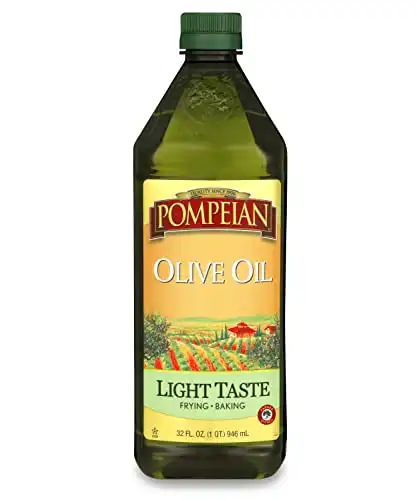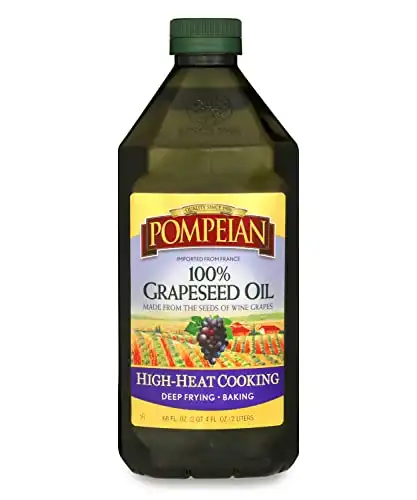Choosing the best oil for searing steak has everything to do with its flavor and smoke point.
After cooking in professional kitchens for over a decade, I can tell you firsthand that not all oils and fats are created equal for high-heat searing.
In this article, I’ll share the characteristics that make some oils and fats work while others don’t. We’ll cover my 5 favorite oils for searing steak; My top pick may surprise you. Stick around to the end for a few special steak searing tricks I have picked up over the years.
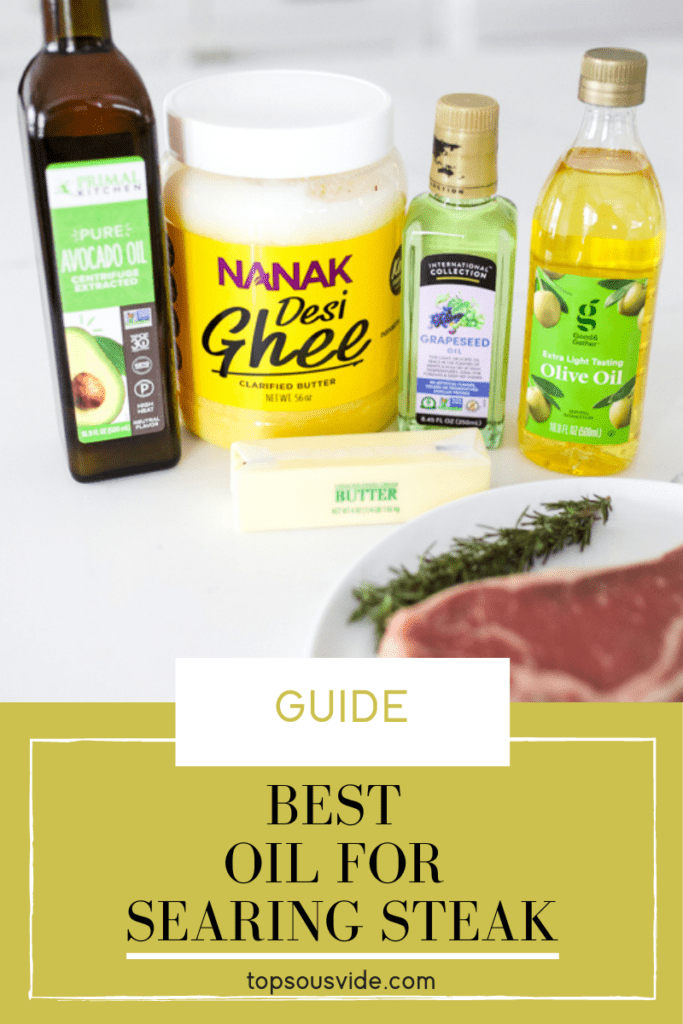
Table of Contents
Characteristics of Oils and Fats for Searing Steak
Smoke Point
Smoke point refers to the temperature at which a cooking fat begins to break down. At the smoke point, you’ll notice the oil or fat stops shimmering and begins to smoke. This is also the point you’ll be running to reset your fire alarm. Not fun.
The smoke point is also called the burning point. The smoke point varies from oil to oil, from a range of 300°F (149°C) to over 500°F (260°C).
For a proper sear, your pan needs to reach 400-450°F (204-232°C). Some oils won’t get that hot before they begin to chemically break down.
Beyond the smoke, oil taken over its smoke point can impart undesirable burnt and bitter notes to the finished dish.
Beyond that, a pan that is too hot and oil at its smoke point can also become incredibly dangerous. The moisture and excess water in the protein you’re cooking can cause the oil to combust into flames upon initial contact.
Free radicals associated with carcinogens can also be found in the smoke of overdone oil. No one cheers for cancer.
The bottom line is that smoke point matters, and you should know the relevant temperature for whatever oil you choose. Make sure it’s high enough to handle the job at hand!
Flavor
Besides smoke point, when choosing an oil or fat to sear with, the other characteristic worth considering is the flavor profile of the oil or fat. It’s not as simple as sticking to neutral flavor profiles to let the flavor of the steak shine, though that’s certainly a sound strategy.
Consider flavor profiles in fats and oils that are very complementary to the robust flavor of steak. These have the power to take your steak to the next level with added depth and layering of flavors.
Below I summarize smoke points and flavors profiles, along with relative costs for a decent selection of oils and fats. Keep in mind the flavor profile isn’t a black or white neutral or flavorful; there are many shades of gray.
Fats and Oils Smoke Point Table
| Oil / Fat | Smoke Point | Flavor | Cost* |
| Avocado Oil (refined) | 520°F / 270°C | Neutral | ~$0.40/Fl oz |
| Sunflower Oil | 486°F / 252°C | Neutral | ~$0.30/Fl oz |
| Ghee (Clarified Butter) | 480°F / 249°C | Yes | ~$0.65/Fl oz |
| Beef Tallow | 480°F / 249°C | Yes | ~$0.70/Fl oz |
| Light Olive Oil (refined) | 465°F / 240°C | Neutral | ~$0.31/Fl oz |
| Peanut Oil (refined) | 450°F / 232°C | Yes | ~$0.20/Fl oz |
| Sesame Oil | 450°F / 232°C | Neutral | ~$0.50/Fl oz |
| Corn Oil | 450°F / 232°C | Neutral | ~$0.10/Fl oz |
| Canola Oil (Rapeseed) | 428°F / 220°C | Neutral | ~$0.11/Fl oz |
| Vegetable Oil (refined) | 428°F / 220°C | Neutral | ~$0.10/Fl oz |
| Grapeseed Oil | 420°F / 216°C | Neutral | ~$0.22/Fl oz |
| Smoke Point Too Low to Sear: | |||
| Lard | 375°F / 190°C | Yes | ~$0.60/Fl oz |
| Duck Fat | 375°F / 190°C | Yes | ~$0.90/Fl oz |
| Chicken Fat (Schmaltz) | 375°F / 190°C | Yes | ~$2.00/Fl oz |
| Coconut Oil | 350°F / 177°C | Yes | ~$0.43/Fl oz |
| Butter | 350°F / 177°C | Yes | ~$0.27/Fl oz |
| Extra Virgin Olive Oil | 320°F / 160°C | Yes | ~$0.34/Fl oz |
If you’re interested in neutral oils in particular, read The Best Neutral Oil by Cooking Need.
Refined vs Unrefined Oil
After cooking oil is extracted or pressed, it can be either immediately bottled or further refined and processed, typically with a heat source.
Those that are simply extracted or pressed and kept in their natural state are often labeled as virgin, raw, cold-pressed or unrefined. Unrefined oils retain greater flavor, color and beneficial nutrients, minerals and enzymes. Though they are generally healthier, they also have lower smoke points which makes them difficult to sear with.
A refined cooking oil is generated using heat to increase the yield and cut down the time needed to extract the cooking oil, making it cheaper. The heat applied leads to considerable loss of nutrients, flavor and color.
Filtering and bleaching processes are also common in refined oils to remove odors and volatile compounds. Removing the volatile compounds is what leads to a higher smoke point, thus making a refined oil more suitable for searing steaks than an unrefined version.
5 Great Oils For Searing Steak
Ghee | Clarified Butter – Top Searing Choice
Ghee is an absolute winner when it comes to searing steak. Its high smoke point of 480°F / 249°C allows you to get your pan hot enough to create that perfect sear.
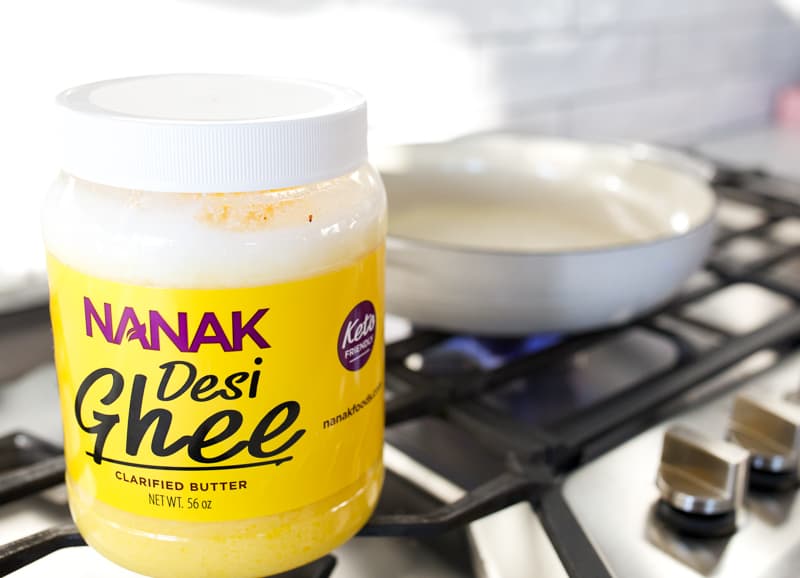
But what exactly is ghee? In short, it’s clarified butter. This means that all the water has been removed from “regular” butter, and only the milk solids remain.
Ghee has its origins in Indian cooking and hasn’t really hit the mainstream in North America yet, but it’s fantastic. You can make it yourself or buy it from most stores.
Ghee will impart a rich, nutty flavor to your protein with some great depth aromatically. It has also got a slew of vitamins and antioxidants. It’s anti-inflammatory and aids in digestion too.
Try adding aromatics such as thyme, rosemary, and garlic to the pool of ghee you’re cooking in. You’ll unlock a story of flavor and aroma your dining companions will be endlessly thankful for.
Refined or Light Olive Oil
Refined or light olive oil has a much higher smoke point than the extra virgin stuff you probably use for everything else. At 465°F / 240°C, that’s plenty of heat to give your steaks a hard sear.
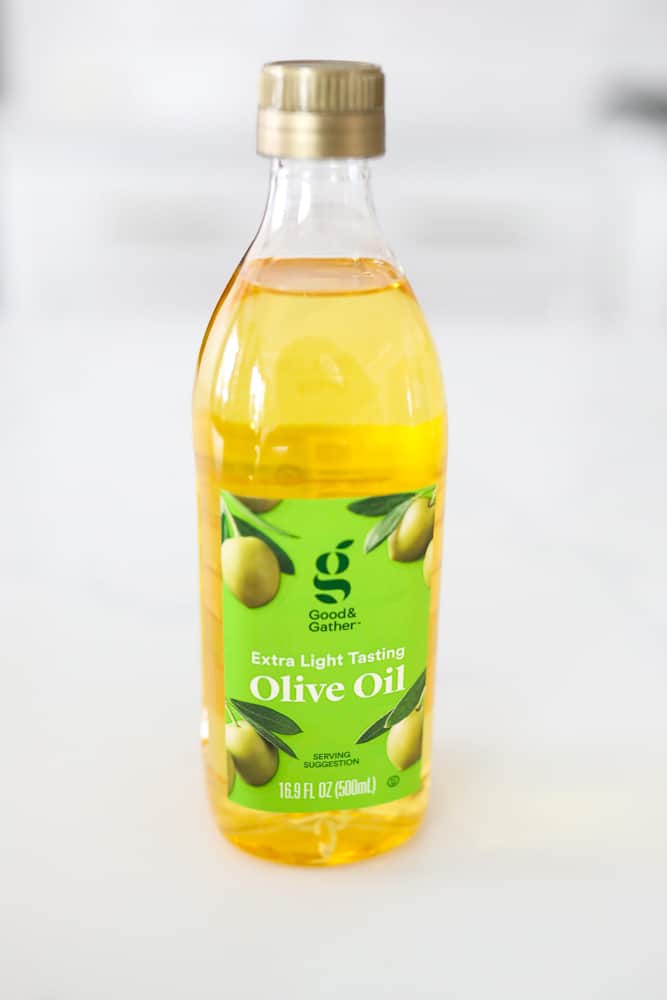
It contains no trans fats and has many residual health benefits of extra virgin olive oil. But you do lose a lot of the anti-oxidant like polyphenols (aka the good stuff) because the oil is refined. This becomes a moot point when searing. More on that later.
This oil is incredibly common, and you can typically purchase it in larger formats. Look for the flavor distinction of “light” or “neutral.” I generally prefer to avoid olive flavoring on my steak, so I prefer neutral.
Either way, it’s an incredibly versatile oil and a great one to always have on hand.
Refined Avocado Oil
Avocado oil has an incredibly high smoke point of 520°F / 270°C.
Not only could you sear your steak perfectly in this oil, but if you wanted to, you could also deep fry it. I’m reminded of the state fair all of a sudden.
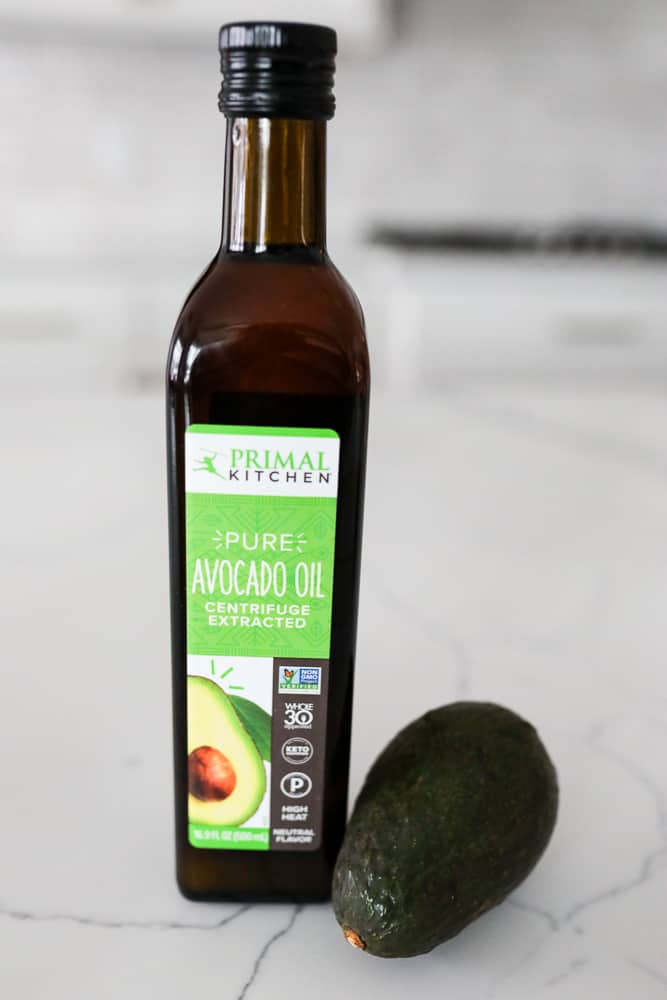
The flavor of avocado oil is much milder than that of light olive oil, so it’s a perfect replacement for all high-heat cooking methods. Though do note it does trend on the pricier side.
Avocado oil contains oleic acid, carotenoids, and other antioxidant-rich nutrients. These are linked to improved heart, skin, and eye health. You’ll also get monounsaturated fats linked to lowering bad cholesterol.
Grapeseed Oil
Grapeseed oil is an oil extracted from the seeds of grapes. It has a smoke point of 420°F / 216°C.
To me, it is the cleanest tasting and most versatile oil to have on hand.
You’ll have no issues searing steak. Its light flavor profile allows other flavor nuances to stand at the front of your palette.
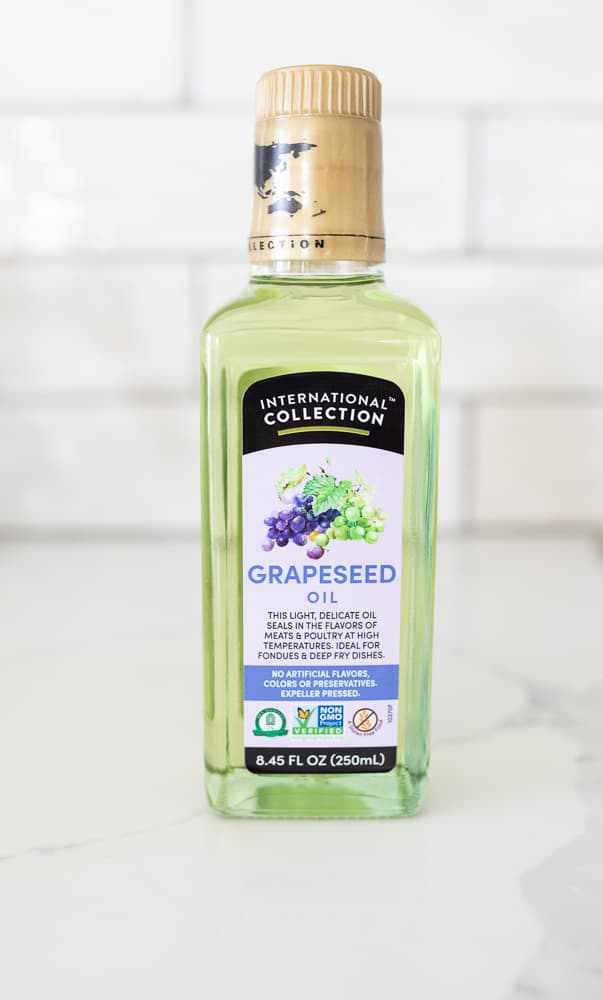
Its neutrality supports flavor infusions and creates marinades with endless flavor combinations. It’s also great to whip up cleaner-tasting aiolis or vinaigrettes.
If you’re cooking the perfect steak, why not have an oil on hand that lends itself to creating all the other accouterments needed for that same meal?
Grapeseed oil is also a by-product of winemaking, so capitalizing on something that would otherwise be wasted is always a win for me.
Animal Fats & Butter (for Basting)
This recommendation is a bit of a curveball, but I think you’ll appreciate its value shortly. The short of it is that duck fat, chicken schmaltz, beef tallow, pork lard, and butter have distinct, impactful flavors.
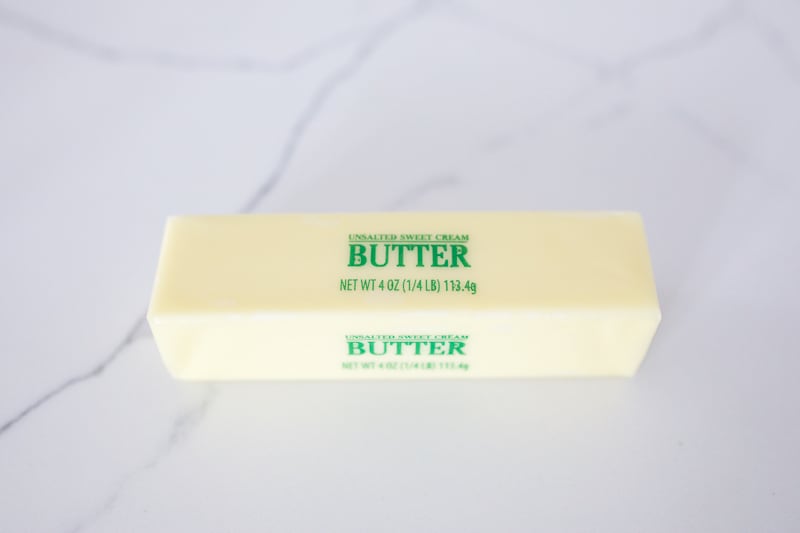
They also all have relatively low smoke points as low as 350°F / 177°C. Therefore not ideal for the initial searing process of steaks.
These low smoke points won’t allow for extended cooking time with your steak. But these fats are an exceptional fit for basting your steaks toward the end of the cooking process.
If imparting flavor is your prerogative, try finishing your cooking with some tasty animal fats after the initial sear. The beauty of ghee is it both sears and flavors your steak in one step, which is why ghee is our most preferred fat or oil for searing steak.
What Oil To Avoid For Searing Steak
Extra Virgin Olive Oil
The primary reason I would avoid extra virgin olive oil (EVOO) for searing steak is it simply won’t get hot enough to sear steak before it becomes dangerous to cook with. The smoke point of EVOO at 320°F / 160°C is well below the 400-450°F / 204-232°F we need for a proper sear of steak.
The other reason I would stay away from extra virgin olive oil for searing steak is much of the beneficial properties that come with the process of cold pressing the olive oil, which makes it extra virgin, become muted when cooking at high temperatures. According to the National Library of Medicine, use at 338°F / 170°C eliminates 75%+ of the primary health benefits of EVOO.
This means a big part of why you pay a premium for EVOO vs regular olive oil has becomes negated at high temperatures. Don’t burn your money.
On a more minor point on why I avoid EVOO for searing, it has a strong flavor profile I prefer my steak not be taken over by.
|
Primary Rating:
5.0
|
Primary Rating:
4.9
|
Primary Rating:
4.9
|
Primary Rating:
4.8
|
Primary Rating:
4.8
|
Expert Tips From a Pro Chef for the Perfect Sear
It’s essential to understand the smoke point of oils. That said, it’s not likely that you’ll always have a thermometer at hand.
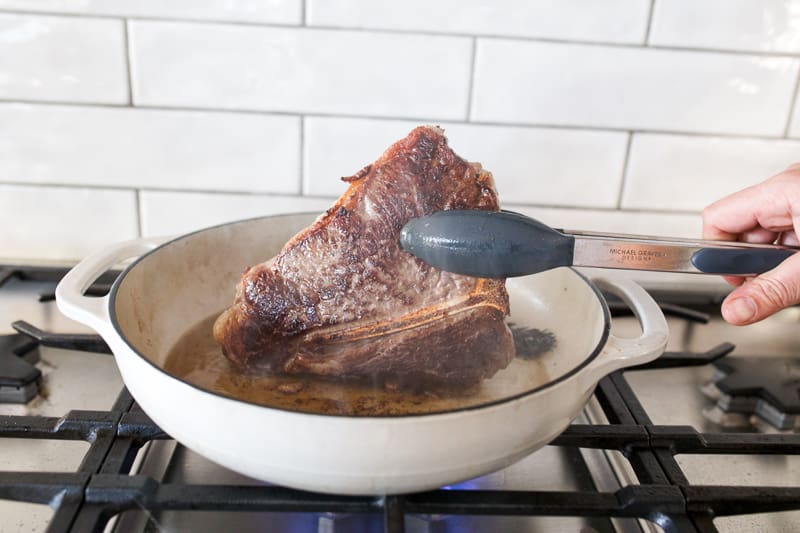
Learn to Use Your Senses When Cooking
One of the best lessons you can learn is to employ all of your senses toward creating a meal. If you see your pan smoking or smell burning oil, that’s a good sign that your pan is too hot.
Use a Cast Iron Pan
Always use a cast iron skillet for searing steak. Yes, that is cast iron in the picture above. It’s enameled cast iron, which makes cleanup a breeze.
Other pans will work, but a cast iron pan benefits from its higher thermal mass. It retains heat effectively and is always oven-ready if your steak needs extra time.
Just make sure your cast iron isn’t sticky before using it. Also make sure your cast iron is seasoned properly with the right oil. And if you have a glass cook top, read these tips for using cast iron on a glass stove top.
Season Generously
When seasoning your steak, season it generously. Don’t just lightly dust the surface with some salt and pepper. Seasoning helps form a crust.
Lower Steak Into Pan Away From You
As a matter of self-preservation, always place the steak into a hot pan by lowering it away from you. The far side should hit the pan last. This will save you a few oil splatters and burns.
Flip Often, But Not Too Often
Finding the right amount of time to sear the steak before flipping is a balance between letting the crust form and not having letting the inside of the steak overcook. Finding this balance comes down to the method with which your are cooking steak.
If you’re steak is already cooked, say sous vide, don’t stay longer than 45 seconds on one side. I’d recommend going 30 seconds a side before flipping and continuing to flip in 30 second increments until you get the crust you like.
Finish With Salt
Always finish your final cut steak with some finishing salt, and if you please, some good EVOO; that way the low smoke point oil in your pantry can get some love too.
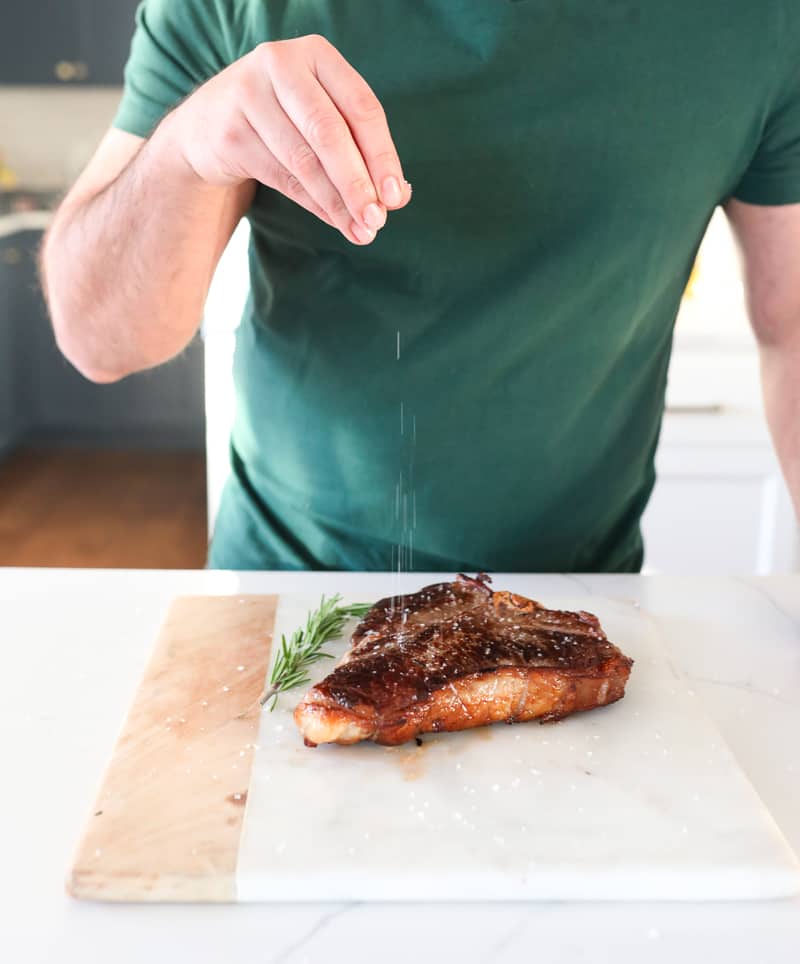
Final Tip: If you’re still setting off your fire alarm, try using less oil. Which may go hand in hand with using a smaller pan. The less surface area there is for the oil, the less smoke you’ll produce. You can also keep the oil in motion to reduce the smoke.
Hopefully you have one of the best oils for searing steaks in your cupboard already. I also hope I’ve encouraged you to try something new to sear with.
If you need some some assistance with technique in searing, read Complete Guide to Searing Steak and More.
Now go enjoy a delicious steak! If you’ve never heard of a spinalis steak, you NEED to read this. It’s the top choice for butchers, chefs, and steak connoisseurs alike.
Below are some sous vide steak recipes you should try:
- Sous Vide Wagyu Steak Recipe: Foolproof A5 and American
- Sous Vide Roast Beef Recipe
- Steakhouse-Style Sous Vide London Broil Recipe
- Sous Vide Ribeye Steak
If you’re curious about which oils are best for fried chicken, read 3 Best Oils to Fry Chicken, Oils to Avoid + Fried Chicken Tips.
Searing FAQs
The best oil for searing steak in our opinion is ghee (clarified butter). It has a high smoke point and a flavor profile that complements steak beautifully.
Good oils for searing steak are: Ghee (clarified butter), avocado oil, olive oil (but not EVOO), and grapeseed oil.
You can use olive oil to sear steak, but do not use extra virgin olive oil, aka EVOO. The smoke point on EVOO is too low to sear steak.
You should use an oil or fat when searing steak. You want the smoke point of the oil or fat to be over 400°F (204°C) to properly sear the steak and avoid overcooking it.
Use 1-2 tablespoons of oil in a hot cast iron skillet (400°F / 204°C) to get the best sear on your steak. Accordingly, you should use an oil with a smoke point 400°F+ (204°C+).
A refined cooking oil is usually generated with heat to make more oil more quickly, making it cheaper. Filtering and bleaching processes are also commonly used to remove odors and volatile compounds to increase shelf life. The processes leads to considerable loss of nutrients, flavor and color. One benefit from refining cooking oil is a higher smoke point, thus making it better oil for searing and frying than the unrefined version.

